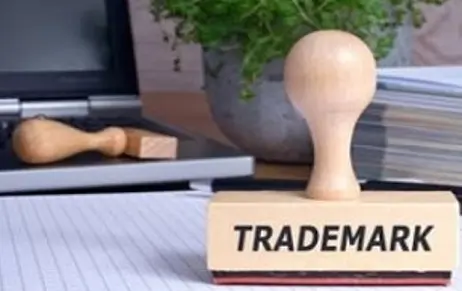TRADEMARK A trademark is something that we encounter on a regular basis. It is the…
Emcure’s Notice of Motion succeeds against Corona Remedies: Bombay High Court
In the recent decision of the Bombay High Court in the case of Emcure Pharmaceuticals v Corona Remedies, the Hon’ble court decided on the issue of deceptive similarity, acquiescence, and balance of Convenience in favor of Emcure Pharmaceuticals.
Facts of the case:
The plaintiff’s trademarks ‘OROFER’ and ‘OROFER XT’ are registered as word marks since 1996 with the trademark registry in class 5 in relation to medicinal and pharmaceuticals preparations for iron deficiency, anemia, methylcobalamin deficiency, folic acid deficiency, zinc deficiency, and so forth.
On, 10 January 2006 the plaintiff became aware of the advertisement of the defendant’s trademark ‘COROFER’ in the Trademark Journal 1371. However, on 17th December 2007, Plaintiff sent Cease and Desist notice to the Defendant through their attorneys. Thereafter the Defendant’s registration was opposed by the plaintiff on 20th December 2007 claiming inter alia prior and original adopter of the mark ‘OROFER’ in class 5 and due to prolonged and extensive use, the mark exclusively connotes to the plaintiff only and would cause confusion and deception among potentials if used by any other entity.
The plaintiff also sent a second Cease and Desist notice to the defendants on 26th June 2009. Moreover, on date 7th September 2013 filed an infringement suit against the defendants. The Plaintiff also filed the notice of motion for interim relief injuncting the defendants from using the impugned trademark in any manner thereof.
Issues Involved:
- Whether the defendant’s mark is deceptively similar to the Plaintiff’s mark?
- Whether the fact that other marks exist with the word “FER” is determinative, in that the use of this word or abbreviation by the Defendant cannot be said to constitute an infringement of the Plaintiff’s marks?
- Whether it constitutes a valid defense if it is shown that the Plaintiff is not the first user of the impugned mark?
- Whether Plaintiff’s claim stands defeated if the alleged delay is proved? And if the knowledge of the Plaintiff regarding the Defendant’s use is shown, has not the Plaintiff acquiesced in the Defendant’s use of its rival marks? Whether S. 33 is limited to a later registered trademark?
Issue 1:
The court held that the true test is to juxtapose the two marks and then analyze the likely effect on the mind of a person of average intelligence and imperfect recollection. In the present case, the entire mark of the plaintiff is incorporated in the defendant’s mark which makes it deceptively similar to the plaintiff’s mark. Thus there is no difference between the plaintiff’s mark and the defendant’s mark except for the addition of the preceding letter ‘C’. The court also relied on the case of Boots Company PLC v. Registrar of Trade Marks & Anr. When it was held CROFEN to be deceptively similar to brufen. Thus the court held that the Defendant’s mark is confusingly and deceptively similar to the Plaintiff’s mark.
Issue 2:
The court held that the fact is inconsequential that there exists another mark with the term FER in them. Moreover, in view of the fact that the defendant itself has sought for the registration of the mark with the term FER, defendants cannot claim a lack of distinctiveness.
Issue 3:
The defendants claim that the mark ‘OROFER’ is already used by one Advent Laboratories Patna who is a prior user since 1983 and the mark is registered on 24th September 1985. The plaintiff however denied the contention and claimed that the mark was filed on a proposed to be used basis and there is no evidence of its actual use. Moreover, Section 28(3) and Section 12 provides for the co-existence of the marks on the register where both the proprietors do not have exclusive rights over each other, however, as against the third party each of them has full rights against the third party. The court held that in the present case the defendant is the third party and not the concurrent user.
Issue 4:
The court held that mere delay in filing the suit in no way defeat the rights of the registered proprietor and which is not firmly settled by various case laws. (Relied Medley Pharmaceuticals Ltd. v Twilight Mecantiles Ltd. & Anr) Moreover, it is also a settled principle that the in-law question of acquiescence arises where the proprietor being aware of the rights and the infringement of the mark but fails to sue without a positive act of encouragement. And this is not the defense available to the infringer.
The court held in reference to acquiescence that “Acquiescence is a species of estoppel, a rule inequity and a rule of evidence. Essential to the acquiescence doctrine is that it is accompanied by encouragement or an inducement: he who possesses a legal right must have encouraged the alleged violator of that right in acting to the latter’s detriment, confident in the knowledge that the former is not asserting his rights against the violator. Acquiescence is not mere negligence or oversight. There must be the abandonment of the right to exclusivity”.
The court on the question of delay, acquiescence, and honesty of adoption, relied on Cadila Pharmaceuticals Ltd. v Sami Khatib and Hindustan Pencils and Schering Corporation and held that even if it is assumed that the defendant’s adoption was honest, the defendant had the means to discover the plaintiff’s mark and particularly in view of the fact of plaintiff’ opposition to the defendant’s mark, the continued use of the mark by the defendant was at its peril. Moreover, the onus of proving the honest and concurrent user lies with the defendant, and the defendant fails to prove the same. However, the defendant also fails to produce the sales figure. Hence the question of acquiescence did not arise. (Relied on Win Medicare v. Somacare Laboratories Ltd)
The defendant further claimed that the S. 33 also applies to the unregistered mark whereas the court rejected the argument and held that the “S. 33 operates in a well-defined and circumscribed set of circumstances. It cannot possible oust every other plea of acquiescence”.
About the Author: Mr. Abhijeet Deshmukh, Trade Mark Attorney, Khurana & Khurana, Advocates, and IP Attorneys and can be reached at [email protected]



